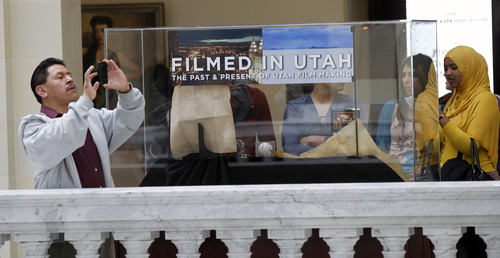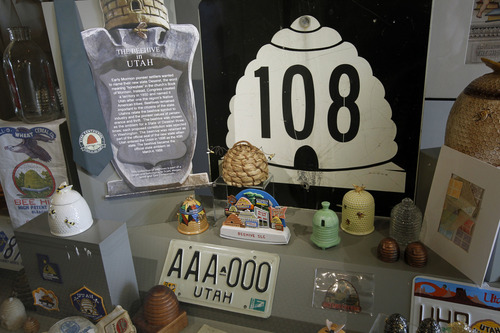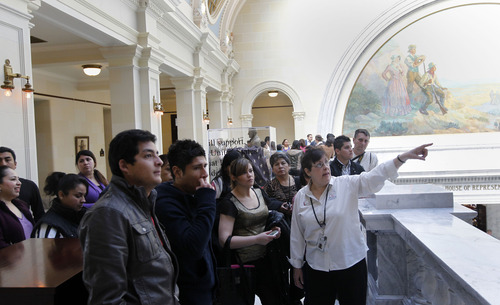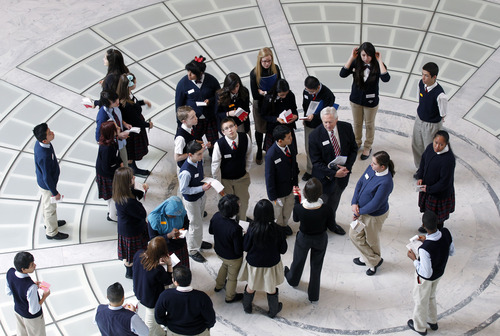This is an archived article that was published on sltrib.com in 2013, and information in the article may be outdated. It is provided only for personal research purposes and may not be reprinted.
Atop Salt Lake City's Arsenal Hill on a cold winter morning 100 years ago, ground was broken for a building Utahns had long awaited. Nearly a generation after gaining statehood, Utah's Capitol was finally being built.
A visitors center exhibit has been opened to honor the 100th anniversary of the groundbreaking.
"Step Back in Time: A Centennial Celebration of the Capitol Construction," located on the first floor of the Capitol by the east entrance, features a collection of photographs and stories that tell the story of how the building came to be.
"We are thrilled to provide a unique and educational opportunity for all Capitol visitors to experience the vibrant history of this wonderful building," said Allyson Gamble, the executive director of the Capitol Preservation Board that helped organize the exhibit, which opened Jan. 28.
The stories of how the state funded the construction of the Capitol, along with the design process and the men who built it, are included in the display.
In order to fund a major portion of the long-awaited building (which Brigham Young originally planned in the city of Fillmore), the state of Utah enforced its inheritance-tax law on the family of Union Pacific Railroad tycoon E. H. Harriman. When he passed away, he left widow Mary Harriman almost $16 million.
As reported by The Salt Lake Tribune in March of 1912, "Mrs. Harriman might have contested the matter and caused a long drawn-out legal suit which would have cost the state more to complete than the amount of the tax." Mrs. Harriman instead willingly wrote a check to the state for $798,546 — $750,000 of which was set aside to build the Capitol.
A few days later, Utah Gov. William Spry's Capitol Commission chose architect Richard K. A. Kletting's design out of the 22 firms that made submissions.
Kletting was an active, on-the-job presence during the construction from Dec. 26, 1912, to Oct. 9, 1916. Kletting is also known for designing the Old Saltair Resort Pavilion, and four of the buildings at the University of Utah's President's Circle.
Financial difficulties prevented Kletting's image for the Capitol from coming fully to fruition. But from 2004 to 2008, the landmark underwent a $260 million renovation to make it less vulnerable to seismic events, and progress was made on restoring aspects of Kletting's original plans and drawing plans for completing them.
Sara Howard, the manager of public relations and visitor services for the Capitol Preservation Board, encourages visitors to take a free guided tour of the Capitol to see for themselves what has changed in the last 100 years.
Joanna Hudson, the visitor services coordinator at the Capitol, leads many of the tours given on weekdays from 9 a.m. to 4 p.m. Hudson explained that the tour is different from years past because they start it with the "Step Back In Time" exhibit. "And I've noticed a lot more people on the tours since it opened."
Charlie Roberts works for the state Tax Commission but helps guide tours in his free time. "For this exhibit I took 30 additional hours of training, and I still learn something new every day."
The exhibit will be changing as the months go by. One wall in the visitors center is set aside for a changing series of photographs showing what the Capitol construction looked like 100 years ago from that month.













